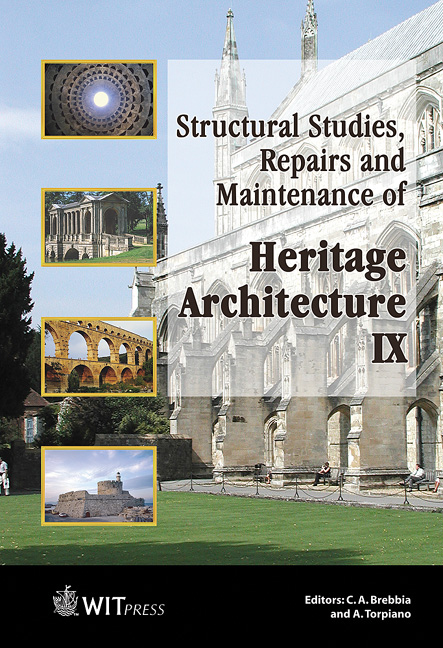Reconstruction Of The \“Neues Museum” In Berlin – Support Structure Planning Pro Preservation Of Historic Buildings
Price
Free (open access)
Transaction
Volume
83
Pages
10
Published
2005
Size
4,484 kb
Paper DOI
10.2495/STR050431
Copyright
WIT Press
Author(s)
M. Gutermann & K. Steffens
Abstract
\“While no work can be understood without knowledge of its technology, no technology can be understood without knowledge of the work, either”. The reconstruction of the \“Neues Museum” in Berlin is a great challenge for all participants in terms of Adorno. Historical structures, especially arched components, usually have amazing bearing capacities. It is rarely possible to verify these only by calculation. Some examples will show how calculation and experiment complement each other in analysing the load capacity. Thus historical structure components can be admitted to modern utilisation. Keywords: monument protection, loading test, maintenance, experimental assessment of bearing capacity, clay pots, mosaic floor, Neues Museum. 1 Introduction In terms of planning and type of construction, structures are often designed for special requirements and a limited period of use. In the age of sparse resources, frequent changes of use, environmental damage and the consequences of inadequate building maintenance, questions arise with existing structures regarding the change of use, building modifications and the remaining service life as the basis for decisions about investment. A prerequisite for the retention of the capital represented by existing structures is the verification of their serviceability and load-bearing capacity. The usual computational analysis assumes that, apart from the geometry, support and loading, all the major material properties and state characteristics are known and that behaviour under load can be described realistically by mathematical methods.
Keywords
monument protection, loading test, maintenance, experimental assessment of bearing capacity, clay pots, mosaic floor, Neues Museum.




